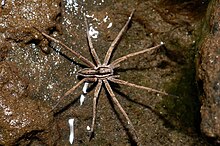Inbiology, being semiaquatic refers to various macroorganisms that live regularly in both aquatic and terrestrial environments. When referring to animals, the term describes those that actively spend part of their daily time in water (in which case they can also be called amphibious), or land animals that have spent at least one life stages (e.g. as eggsorlarvae) in aquatic environments. When referring to plants, the term describes land plants whose roots have adapted well to tolerate regular, prolonged submersion in water, as well as emergent and (occasionally) floating-leaved aquatic plants that are only partially immersed in water.




Examples of semiaquatic animals and plants are given below.
Semiaquatic animals include: